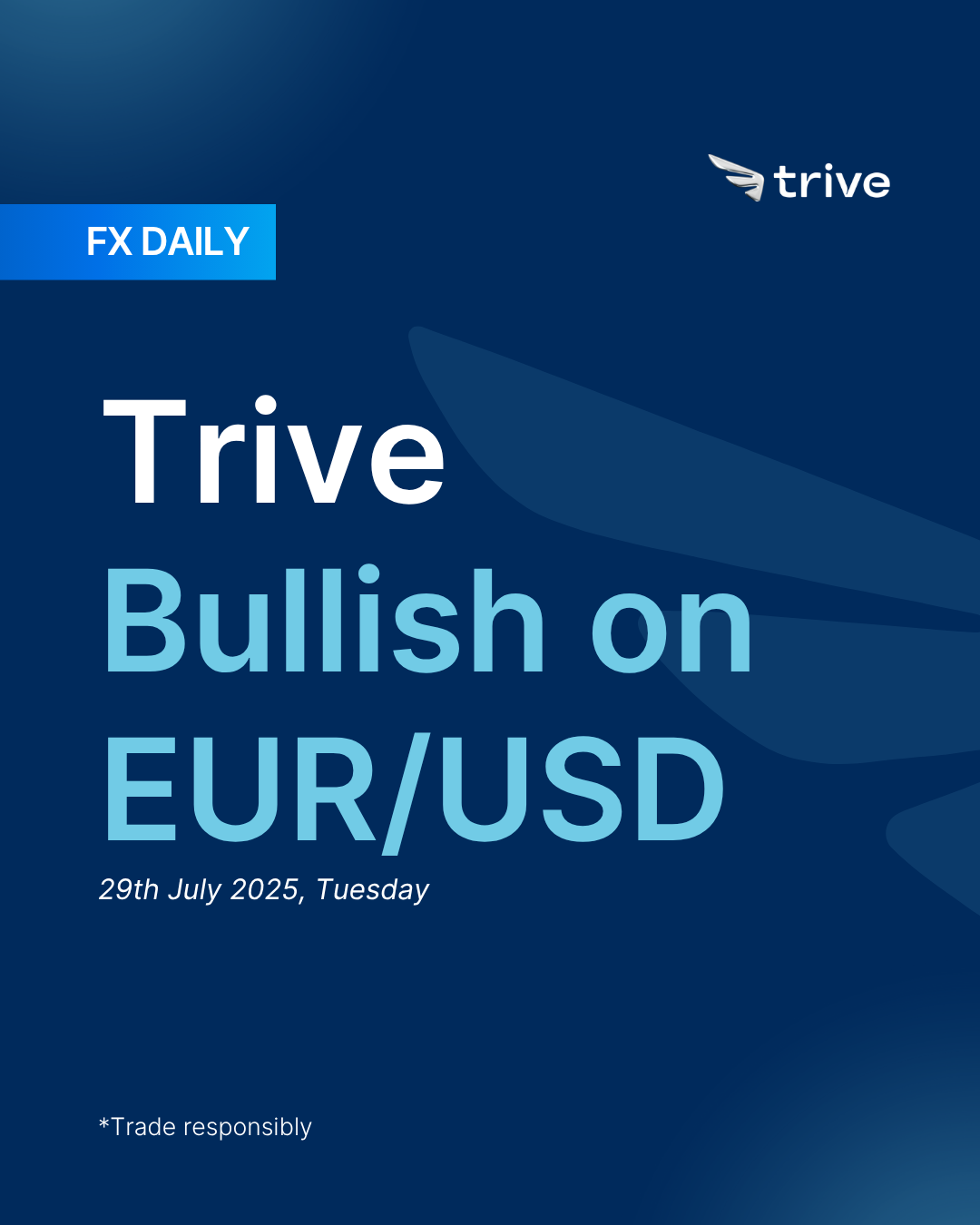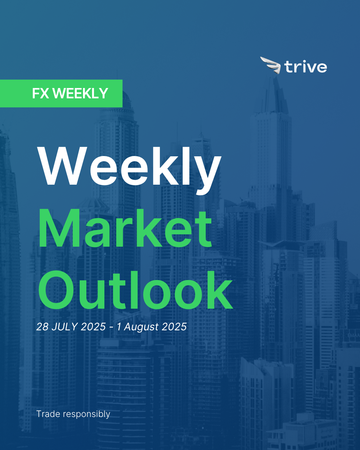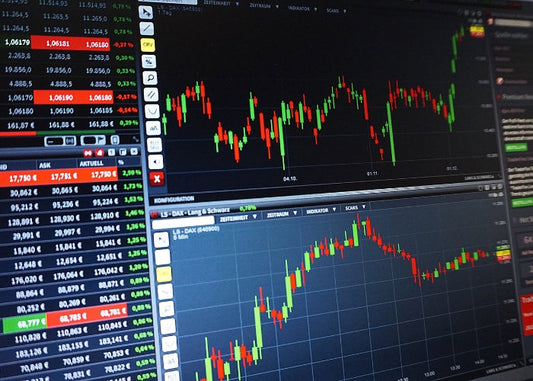FX Daily: Trive Bullish on EUR/USD

The Euro ended last week as the top-performing G10 currency, powered by a hawkish ECB and reduced expectations for near-term rate cuts. President Lagarde and ECB officials emphasized policy stability, pushing back against the idea of a September cut. This anchored the Euro and helped it rise despite mixed data and trade uncertainty. Meanwhile, the US Dollar ended the week lower amid mixed economic signals and rising political noise. With the Euro supported by firm central bank messaging and the USD facing policy and data-related risks, the bias remains bullish for EUR/USD.
EUR: Top G10 currency
The Euro showed notable strength and ended the week higher against the dollar, supported by a surprisingly hawkish tone from the European Central Bank that helped offset ongoing trade-related uncertainty. The currency began the week cautiously, as markets focused on the upcoming August 1st US tariff deadline and reports that the EU was preparing a multi-billion euro retaliation plan. Sentiment shifted mid-week after reports suggested a US-EU trade deal with a 15% tariff rate might be close, pushing EUR/USD to a weekly high near 1.1780. However, the main turning point came on Thursday during the ECB meeting. Although the bank held rates steady, President Lagarde’s firm “wait and watch” stance, combined with reports that policymakers see a high bar for a September cut, led to a hawkish shift in market expectations. This strength allowed the Euro to push through mixed economic data and conflicting trade headlines, ending the week on strong footing above 1.1700.
The ECB kept its deposit rate at 2.00%, as expected, but President Lagarde’s press conference was the main focus. She said policy is “in a good place” and noted that the ECB’s June projections remained valid despite trade risks. Her comments pushed back against the idea of near-term rate cuts, and the decision to hold rates was unanimous. Afterward, source reports confirmed that ECB policymakers see a high bar for easing in September. This led to a sharp repricing in the money markets, with expectations for rate cuts by the end of the year dropping from over 20 basis points to around 14 basis points by Friday.
Lagarde’s message was echoed on Friday by ECB officials including Villeroy, Kazaks, and Nagel, who all stressed the need for a steady hand and no urgency to change policy. This coordinated tone helped anchor the Euro and gave investors confidence in the ECB’s current path.
On the trade front, the Euro remained sensitive to the back-and-forth in EU-US negotiations. The week began with the EU preparing a potential €93 billion retaliation package in case of a breakdown in talks. Optimism surged mid-week following the US-Japan trade agreement, with reports suggesting that the EU and US were nearing a similar deal. However, that optimism faded after a White House official dismissed those reports as speculation. President Trump later said there was only a “50-50 chance” of a deal with the EU, which limited the Euro’s further gains.
Economic data was mixed but showed some resilience. The July HCOB Flash PMIs for the Eurozone surprised to the upside, with the Composite Index rising to 51.0 from 50.6, suggesting solid economic momentum at the start of the third quarter and continued disinflation, supporting the ECB’s patient stance. On Friday, Germany’s IFO Business Climate index for July came in slightly below expectations at 88.6 but edged up from the previous month. The data had little impact on the market. Earlier in the week, ECB surveys showed a drop in one-year inflation expectations among firms, down to 2.5% from 2.9%, and continued weakness in corporate loan demand, reflecting ongoing challenges in the region.
Overall, the Euro’s performance was primarily driven by the ECB’s hawkish tone, which allowed it to stay firm even in the face of trade uncertainties and a stronger US dollar late in the week. While trade headlines caused some volatility, the ECB’s message acted as a strong anchor for the currency and gave it a solid base to finish the week higher.
The Euro maintains a bullish outlook supported by the European Central Bank’s unexpectedly hawkish stance, with President Lagarde emphasizing a “wait-and-see” approach and suggesting the ECB is in a “good place” with inflation at target. Markets have sharply scaled back expectations for further rate cuts, and policymakers are signaling a high bar for easing in September, helping to anchor the EUR even amid external uncertainties.
The currency has also regained upward momentum on optimism over a potential EU-US trade deal, which, if finalized, would remove a key downside risk and potentially push the Euro toward fresh year to date highs. ECB officials have largely downplayed the need for further stimulus, reinforcing the perception that the easing cycle may be nearing its end. Recent upside surprises in Eurozone PMIs and resilient economic indicators further support the case for a steady policy path.
However, some caution is warranted as disinflation continues, and any breakdown in trade talks or weaker data could weigh on sentiment. Still, with the market now pricing in fewer than 20bps of rate cuts for the rest of the year and a coordinated ECB message backing EUR stability, the path of least resistance remains to the upside, especially if a trade deal materializes before the August 1st tariff deadline.
USD: Big week ahead
The US Dollar ended a volatile week lower, as a major breakthrough in trade negotiations with Japan was offset by mixed domestic economic data and continued pressure on the Federal Reserve. The DXY started the week on a weaker note, slipping below 98.00. Sentiment picked up mid-week after the announcement of a landmark US Japan trade deal, which helped ease fears of a global trade war ahead of the August 1st tariff deadline. However, the dollar couldn’t hold on to any meaningful gains. Conflicting reports about a potential EU deal and a sharply mixed US PMI report showing a booming services sector alongside a contracting manufacturing sector added to the confusion about the economic outlook. President Trump’s ongoing public campaign for rate cuts, including a visit to the Federal Reserve and his comment that he “got the impression” a cut was on the way, kept the focus on policy uncertainty. By the end of the week, the dollar was trading near 97.60, ending lower overall, as markets weighed the reduced geopolitical risk against signs of a divided US economy and an unpredictable policy path.
The S&P Global Flash PMI report for July gave mixed signals. The Services PMI rose sharply to 55.2, much higher than the expected 53.0, pointing to strong growth. In contrast, the Manufacturing PMI unexpectedly dropped into contraction at 48.5, compared to expectations of 52.7. The overall composite PMI rose to 54.6, but the report highlighted that tariff related price pressures were growing even as third quarter growth appeared solid.
The labor market showed resilience, with Weekly Initial Jobless Claims falling unexpectedly to 217,000, suggesting a tight job market with low layoff rates.
In contrast, data from the housing and business investment sectors was weaker. June Existing Home Sales dropped more than expected, falling 2.7% to a 3.93 million annualized rate. The National Association of Realtors pointed to record high prices and low supply as key challenges. Meanwhile, June Durable Goods Orders fell 9.3%, which was less than feared, but the more closely watched nondefense capital goods orders excluding aircraft fell by 0.7%, indicating softening business investment.
On the policy front, President Trump kept up his criticism of the Federal Reserve, blaming Chair Powell for problems in the housing market and calling for deeper rate cuts. The pressure increased with Trump’s unusual visit to the Fed on Thursday. Afterward, Trump said he “got the impression” from Powell that a rate cut might be coming, which briefly pushed down Treasury yields. With the Fed in its premeeting blackout period, no official comments were made, though Treasury Secretary Bessent said Trump would not fire Powell but supported an internal review of the Fed’s nonmonetary functions. Despite the political noise, market pricing for Fed policy stayed relatively steady, with expectations pointing to about 45 basis points of rate cuts by the end of 2025.
In trade news, the week’s biggest development was the US Japan deal, which included a 15% reciprocal tariff on most goods lower than the previously threatened 25% and a commitment from Japan to invest $550 billion in the US. This was seen as a major step in reducing global trade tensions.
Talks with the EU remained uncertain. While midweek reports hinted at a deal similar to the Japan agreement, White House officials downplayed these stories as speculation. President Trump later said there was a “50 50 chance” of a deal. Meanwhile, EU diplomats confirmed they had prepared a €93 billion retaliation package in case negotiations broke down.
Other trade moves included smaller agreements with the Philippines and Indonesia at a 19% tariff rate. Trump struck a tougher tone on Canada, suggesting that it might face tariffs without any negotiations. As the August 1st deadline approaches, many countries are under pressure to finalize their deals.
Market sentiment improved midweek after the announcement of the US Japan trade deal, which helped reduce the fear of a global tariff standoff. This created a more positive environment for equities, though it didn’t provide lasting support for the dollar. The highly mixed US PMI data tempered investor enthusiasm. The sharp difference between the strong services sector and the weak manufacturing numbers raised questions about where the economy is really headed, keeping investors cautious and limiting the dollar’s recovery.
In the near term, the USD may hold its ground or even extend gains, supported by a resilient US economy, consumer confidence has been rising since May, PMIs remain in expansion, unemployment is stable, and inflation remains sticky .. leaving the Fed in no rush to cut rates. But cracks are starting to show already, the Manufacturing PMI unexpectedly dropped into contraction at 48.5, compared to expectations of 52.7.
The recent Dollar strength looks more like a temporary bounce than a lasting reversal. Earlier weakness came from a reallocation away from US assets, and while strong US returns have paused that move, the underlying pressure remains.
Uncertainty is still high, especially around tariffs, with no clarity on how far or fast they’ll go. Political noise, including talk of replacing the Fed Chair, adds to investor caution. Inflation data was mixed, but supports the view that the Fed may still cut rates later this year. All of this keeps the broader USD outlook tilted to the downside.
All that being said, next week is packed with high-impact risk events. The FOMC meeting on Wednesday could have a major influence on the markets. Currently, there’s a 95% probability priced in for a hold, with only a 5% chance of a rate cut. If the Fed decides to hold, the market’s focus will shift to their rhetoric and forward guidance. On the off chance they opt for a cut, which is highly unlikely, it would be a bearish surprise and further reinforce our bearish outlook.
Following that, Friday brings the NFP and ISM Manufacturing PMI, both of which will help shape the economic outlook for the US dollar. We’re looking for weaker prints for both to support our bias. However, if there’s a strong bullish surprise in either, the USD could continue its recent rally.
 EUR/USD 4H
EUR/USD 4H
Disclaimer
This material is provided for informational purposes only and does not constitute financial, investment, or other advice. The opinions expressed in this material are those of the author and do not necessarily reflect the views of Trive International. No opinion contained in this material constitutes a recommendation by Trive International or its author regarding any particular investment, transaction, or investment strategy. This material should not be relied upon in making any investment decision.
The information provided does not consider the individual investment objectives, financial situation, or needs of any specific investor. Investors should seek independent financial advice tailored to their individual circumstances before making any investment decisions. Trive International shall not be liable for any loss, damage, or injury arising directly or indirectly from the use of this information or from any action or decision taken as a result of using this material.
Trive International may or may not have a financial interest in the companies or securities mentioned. The value of investments may fluctuate, and investors may not get back the amount they originally invested. Past performance is not indicative of future results.
For more information about Trive International, please visit http://trive.com/int
Additional Information
Investing involves risk, including the potential loss of principal. Diversification and asset allocation strategies do not ensure a profit or guarantee against loss. The content in this material is subject to change without notice and may become outdated or inaccurate over time. Trive International does not undertake any obligation to update the information in this material.
By accessing this material, you acknowledge and agree to the terms of this disclaimer. If you do not agree with these terms, please refrain from using this information.
No comments
Home
Trive
TriveHub





0 comments